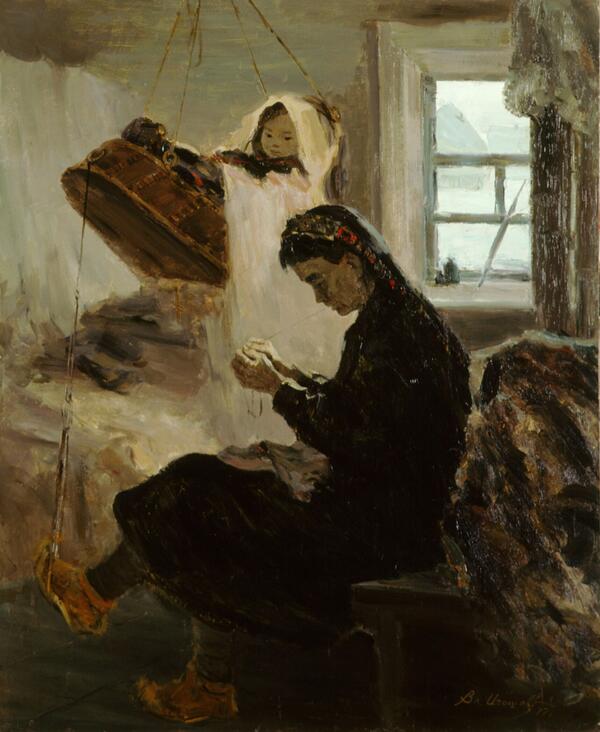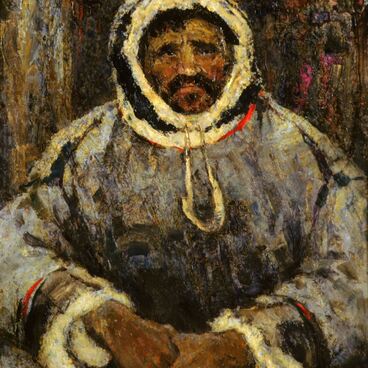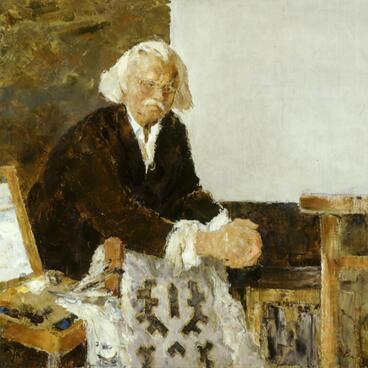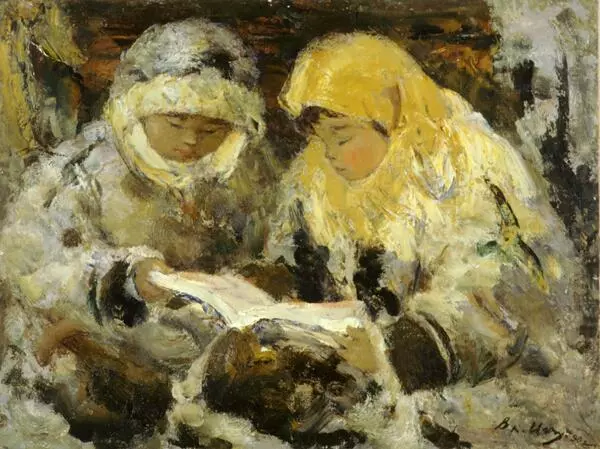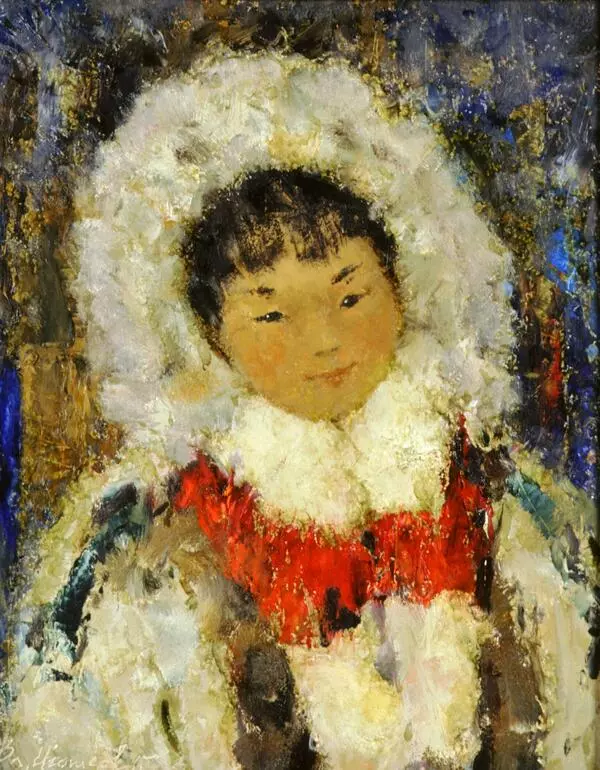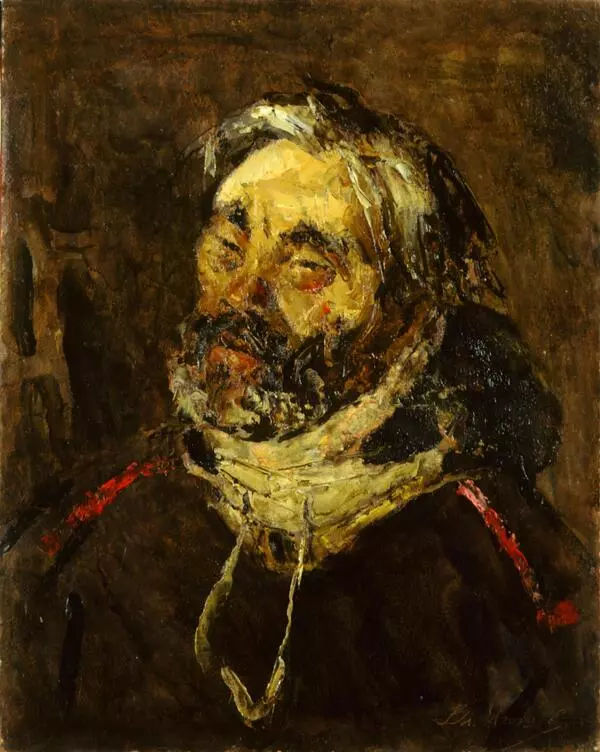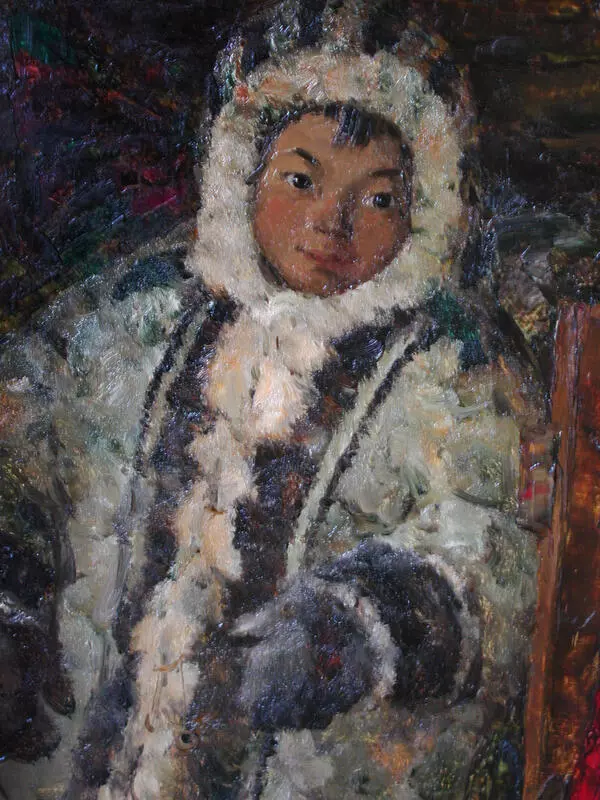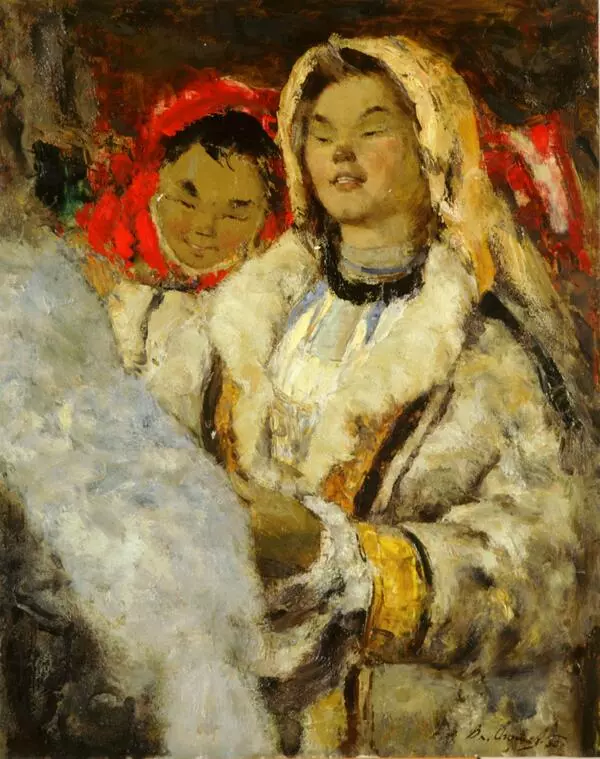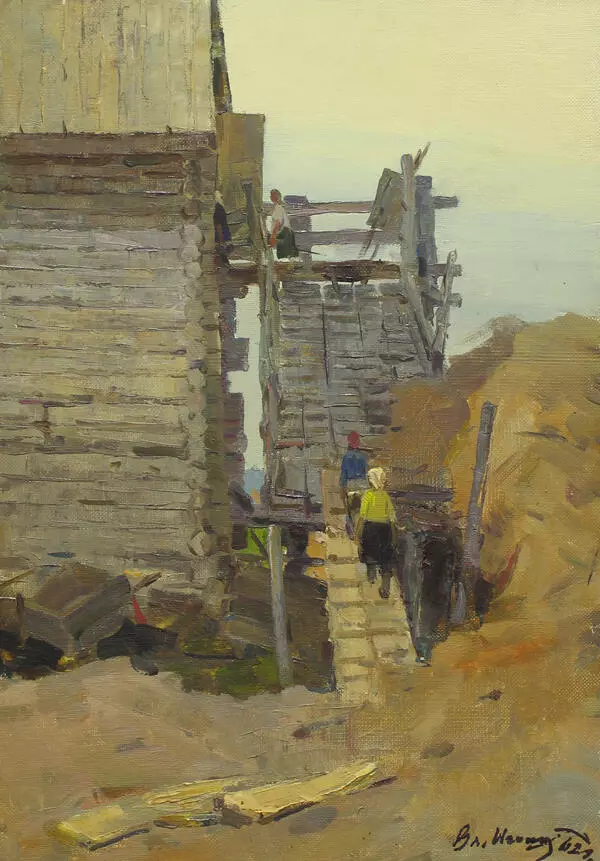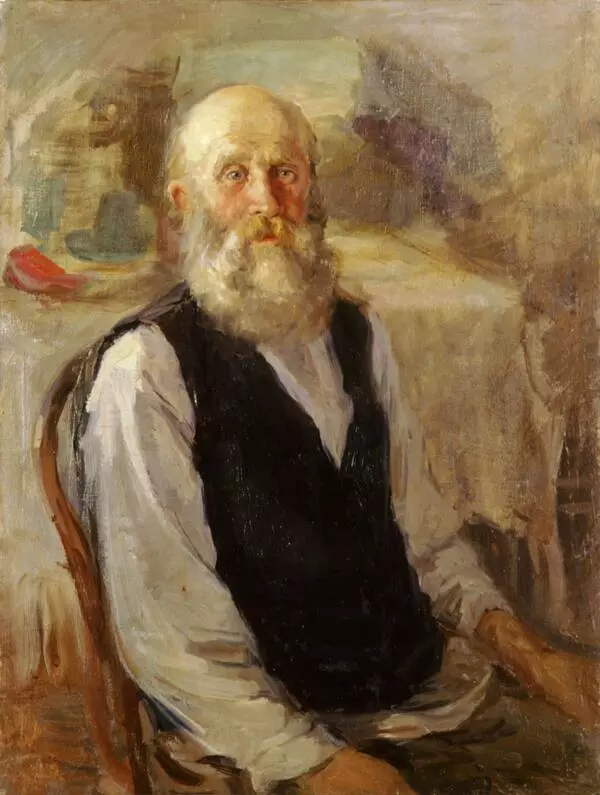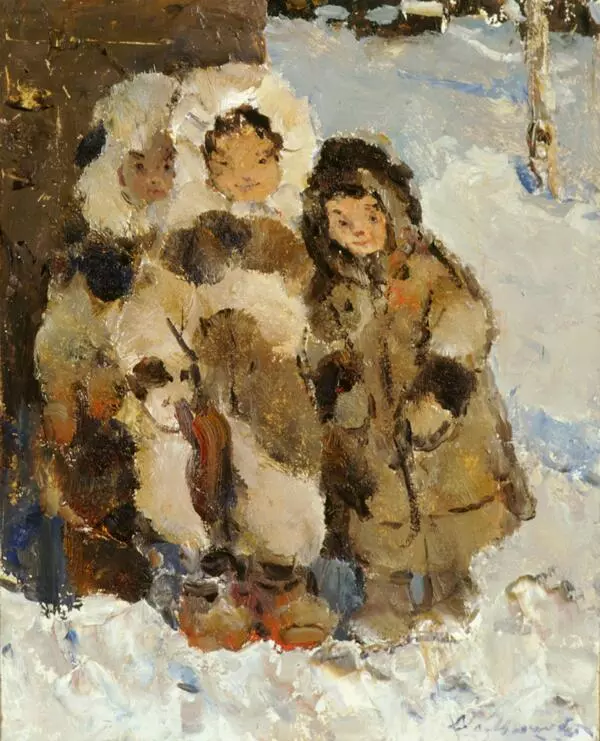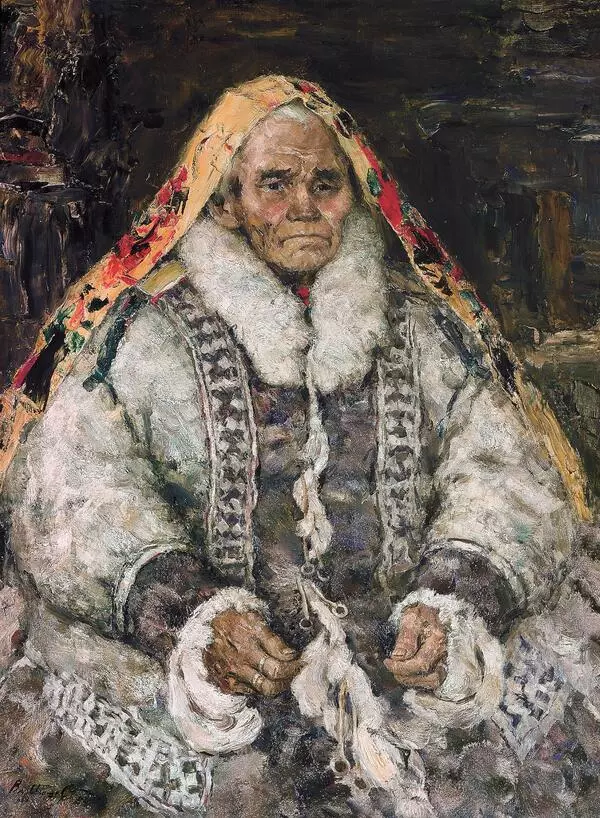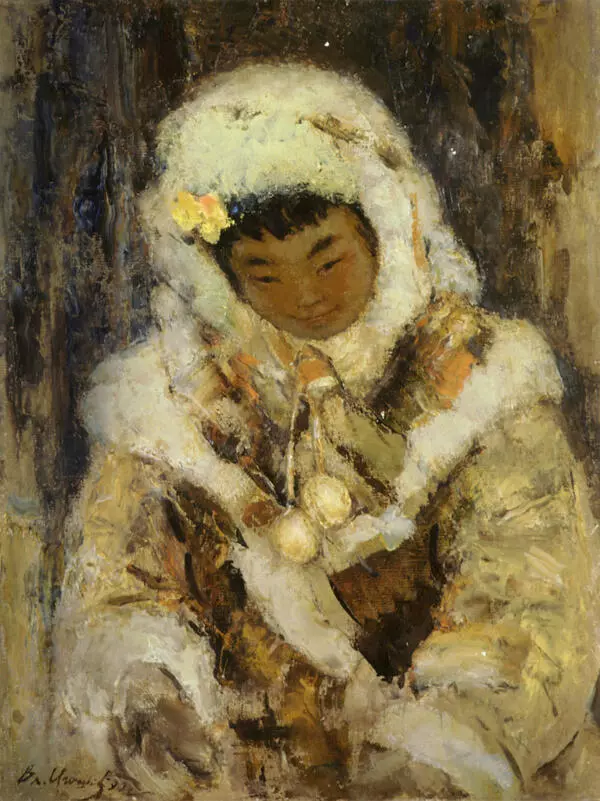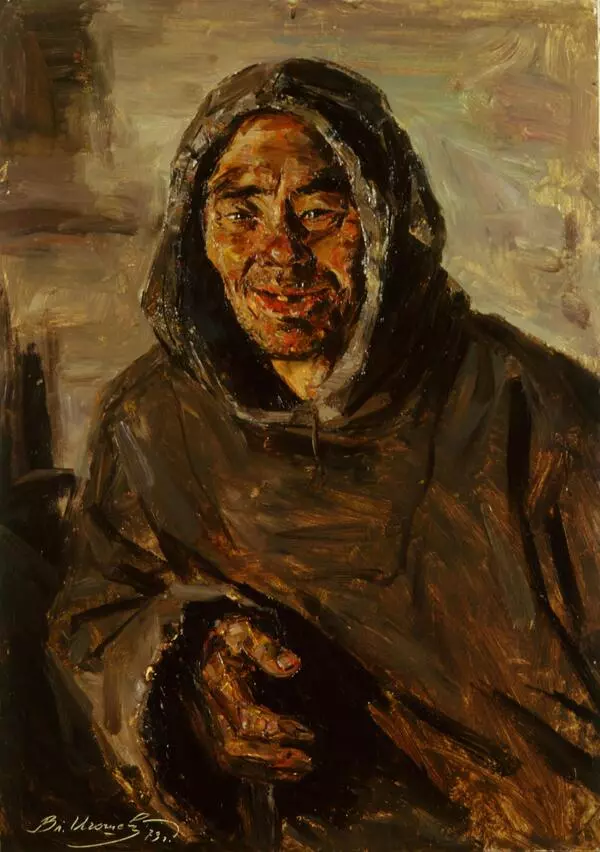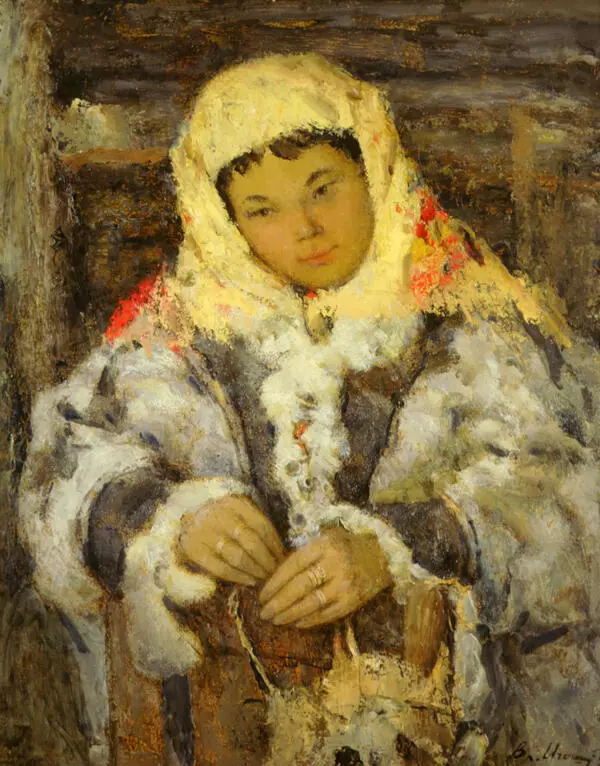The People’s Artist of the USSR Vladimir Igoshev was born in village Igoshevsky situated close to Askino in the north of Bashkiria. He graduated from The Ufa College of Arts in 1940 and The Surikov Art Institute in Moscow in 1950.
In 1954 he went up north for the first time, to the current territory of Yugra, where he explored the simple everyday life of Khanty-Mansi reindeer-breeders, hunters and fishermen, their customs and traditions. In the north the men were considered breadwinners and protectors, while women were regarded as homemakers. Such factors as the long and cold winter, dependence on nature and its changeability formed contemplative and sharp-sighted people, who know well how to use fruit of the land efficiently and economically.
The subject of the painting is an episode from the Northern woman’s life. In the region the girls were taught handicraft since early years. The viewer sees a grown woman depicted with the help of the back lighting. Her motions are automatic: she is rocking a cradle with her leg and doing a complicated work (pulling the deer tendon) at the same time. A girl in a cradle is watching her grandmother.
The painting was made with dimmed colours. The room with a woman and a child is illuminated by the dimmed light from the window. The child’s head is surrounded with the gentle gleam diffused from a piece of cloth thrown on the cradle.
The Khanty and the Mansi people endued the cradles with great force. There were several types of cradles, which varied in materials and time of usage (the daytime and the nighttime ones). The cradles made of birchbark were only made by women, the wooden ones were only made by men. It was believed that without a cradle a baby is helpless and sensitive to dangers. The daytime cradles made of birchbark were habitual for the Northern Khanty and Mansi, and the wooden ones were habitual for the Northern and the Eastern ones.
A bow made of bird cherry was always attached to the head of the cradle for the bed curtain. There were a lot of beliefs connected with cradles. For example, it was supposed to be taken inside or out of the house only with the head of the bed first. The cradle wasn’t supposed to be given through the doorstep. When the baby grew up, the cradle was kept till the birth of the next child. When the cradle was too old, it wasn’t thrown away but taken to the forest and hung on the birch-tree.
In 1954 he went up north for the first time, to the current territory of Yugra, where he explored the simple everyday life of Khanty-Mansi reindeer-breeders, hunters and fishermen, their customs and traditions. In the north the men were considered breadwinners and protectors, while women were regarded as homemakers. Such factors as the long and cold winter, dependence on nature and its changeability formed contemplative and sharp-sighted people, who know well how to use fruit of the land efficiently and economically.
The subject of the painting is an episode from the Northern woman’s life. In the region the girls were taught handicraft since early years. The viewer sees a grown woman depicted with the help of the back lighting. Her motions are automatic: she is rocking a cradle with her leg and doing a complicated work (pulling the deer tendon) at the same time. A girl in a cradle is watching her grandmother.
The painting was made with dimmed colours. The room with a woman and a child is illuminated by the dimmed light from the window. The child’s head is surrounded with the gentle gleam diffused from a piece of cloth thrown on the cradle.
The Khanty and the Mansi people endued the cradles with great force. There were several types of cradles, which varied in materials and time of usage (the daytime and the nighttime ones). The cradles made of birchbark were only made by women, the wooden ones were only made by men. It was believed that without a cradle a baby is helpless and sensitive to dangers. The daytime cradles made of birchbark were habitual for the Northern Khanty and Mansi, and the wooden ones were habitual for the Northern and the Eastern ones.
A bow made of bird cherry was always attached to the head of the cradle for the bed curtain. There were a lot of beliefs connected with cradles. For example, it was supposed to be taken inside or out of the house only with the head of the bed first. The cradle wasn’t supposed to be given through the doorstep. When the baby grew up, the cradle was kept till the birth of the next child. When the cradle was too old, it wasn’t thrown away but taken to the forest and hung on the birch-tree.

